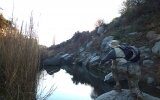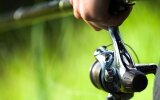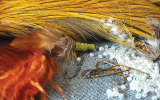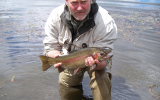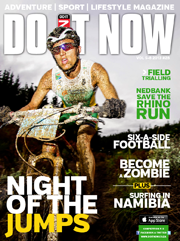- Magazine
- #readityourway
- Weekly Stories
- #shareyourstory
-
Adventure
- Abroad Travelling
- Africa Travelling
- Events
- Expos & Shows
- Festivals
- Fishing
- Free Diving
- Gliding
- Horse Riding
- Inspiring People
- Islands Travelling
- Kite/Windsurfing
- Motorbiking
- Motorised Water Sports
- Mountaineering
- Mountain Biking
- Off-road 4x4
- Off-road Motorbiking
- Paddling
- Performance Driving
- Photography
- Rock Climbing
- Rollerblading
- Sailing
- Scuba Diving
- Skateboarding
- Skydiving
- Snowboarding & Skiing
- Surfing
- Swimming
- Trail Running
- Wakeboarding
- Waveski Surfing
-
Sport
- Adventure Racing
- Fishing
- Free Diving
- Gliding
- Health & Fitness
- Horse Riding
- Inspiring People
- Kite/Windsurfing
- MMA
- Motorbiking
- Mountain Biking
- Multi-sport
- Off-road 4x4
- Off-road Motorbiking
- Paddling
- Performance Driving
- Photography
- Road Cycling
- Road Running
- Rock Climbing
- Rollerblading
- Sailing
- Scuba Diving
- Skateboarding
- Skydiving
- Snowboarding & Skiing
- Surfing
- Swimming
- Rugby
- Trail Running
- Triathlon
- Wakeboarding
- Waveski Surfing
- Lifestyle
- Calendar
River Therapy
Alan Hobson | Photos & Video: Courtesy of Angler & Antelope
Topic:
Fishing
There is something captivating when fly fishing a river. Maybe it has something to do with the fact that all your senses are awakened. Visually, the greenery of the tree-lined banks contrasted against a bright blue sky, the sparkles of happiness glinting from the water and the possibility of catching a glimpse of a trout in the clear water, all combine to spike one’s consciousness to another level.

Then there are the sounds of Mother Nature that transport you to another world. Birds calling and mountain reedbuck whistling for your attention, whilst the river gurgles and pulses to your heartbeat and the breeze caressing the trees enflames your soul. Just sit there and soak it all in, for the power of observation is instrumental to your success as an angler, and it will also help you to de-stress.
Position
Study the flow of the water as it is the source of the food supply, the surrounding vegetation and substructure on the river bed. Think about where you would hide if you were a fish and had to battle the current, expending as little energy as possible not to exhaust yourself by just being there. Don’t forget to look above you for any potential predators. Generally, fish position themselves in what is described as a ‘prime lie’, where they are protected behind a structure, such as an indentation in the riverbed that has been scoured by rocks during heavy rains. Alternatively, behind or in front of a rock that’s out of the main current or underneath a submerged tree, but in a position where the river flow brings food to them and offers the fish protection. Therein lies the challenge; as an angler that is where you need to present your fly, looking as natural as possible. This challenge is made somewhat more difficult by the fact that above the water there are usually structures, like over-hanging trees and or riverside shrubs and bushes, with branches submerged or above the water. The best place to stand is in the water, as the area above where the water flows is mostly unobstructed.
Casting
Casting upstream and having the fly drift back down towards you is the method that provides the most natural presentation because the fly drifts down towards the fish, as any food would naturally. Fishing upstream however, requires a lot more skill as you have to control your fly line when the current carries it towards you. If you pull or strip and there is no reaction at the end of your line, where your fly is, you won’t know that there’s a fish taking your fly, nor will you be able to set the hook. So you’ll end up having to constantly strip line in to keep pace with the water and mend your line by flicking it in and out of the current to control it and keep pace with the flow of the water. To counter this, attach a strike indicator (wool, yarn or foam), which is visible and floats, to the top end of the leader. The leader connects your fly line to the fly and is generally the length of your fly rod. The indicator allows you to gauge the speed at which the water is flowing, the depth of the water and, most importantly, detect any reaction to your fly so that you can react by striking. If the wind is blowing, the situation becomes trickier as not only do you need to control the line on the water, but also when casting, to keep it out of the trees and bushes around you. If there are too many obstructions around you then fish downstream, allowing the current to take your presentation down river and then twitch your fly back up towards you, as if the insect was swimming back upstream. The secret to either method is to always be in contact with the fly so that if a fish picks it up you can detect the take and set the hook. Both ways are challenging, but very rewarding.
South Africans are blessed with a great diversity of landscapes and many fly fishing rivers throughout the country. The beauty is the variety and quality of rivers we have to choose from, ranging from classic, small streams to large pools within a river bed in the Karoo. To enjoy some serious ‘river therapy’, visit one of the recommended areas listed. And if you can’t get down to the water in the near future, then read one of our iconic South African books on fly fishing rivers, as they are equally therapeutic.
Recommended areas:
Western Cape: www.piscator.co.za
KwaZulu-Natal: www.nffc.co.za
Eastern Cape: www.wildtrout.co.za,
www.maclearflyfishing.co.za,
www.wildflyfishinginthekaroo.co.za
Mpumalanga: www.flyfishing.co.za
Recommended websites:
www.tomsutcliffe.co.za
www.netbooks.co.za
Recommended books:
Hunting Trout by Tom Sutcliffe
The Rapture of the River by Sydney Hey
Issue:
Issue 23 Mar '13
Contributor:
Alan Hobson

